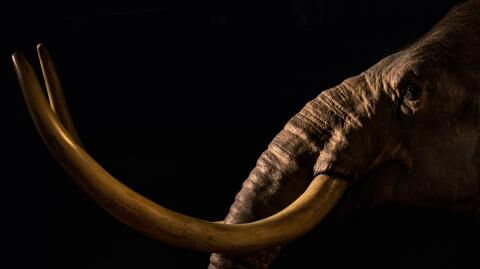Were Neanderthals and mammoths some of the first residents to live in the Paris region of France? Although it might sound a bit preposterous at first, this could actually be true. The National Institute of Preventive Archaeological Research (Inrap) revealed on Thursday 15th October that an incredibly rich prehistoric site has been uncovered near the banks of the river Seine in the northwest of Paris.
Discover our latest podcast
A woolly mammoth tusk and shards of cut flint
The site, which dates back to the Middle Palaeolithic period (-350,000 to -45,000 years before our time) was first discovered during the redevelopment work of Grand Paris, which took place throughout the region between 1860 and 1870. According to Inrap, shards of cut flint as well as the remains of a woolly mammoth or ancient elephant tusk were found more than four meters below the earth, having been buried and trapped there in frozen earth. Excavations took place between 24th August and 2nd October.
Although we didn’t have any solid scientific proof before, we have known that mammoths roamed on Parisian soil tens of thousands of years ago for a long time and this discovery is just another one to add the growing collection that we now have. Over the last ten years, Inrap has unearthed several woolly mammoth remains in France, the most notable of which were discovered at two Middle Paleolithic sites: Changis-sur-Marne and Montereau-sur-le-Jard, both in the north of the country.
Poorly documented areas
‘The quarries of the bend of the river Seine, in the same region, are well-known to prehistorians and geologists,’ explains Inrap. But these areas have been rather badly documented since the 19th century when urban construction work in the Paris region first began.
However, according to Inrap, between 1860 and 1870, when the renowned official Haussmann was rebuilding Paris, many discoveries were made such as lithic technologies, different wildlife as well as rare fossils confirming the presence of Man in the Parisian area during ancient Prehistory. As a result, the current peri-urban redevelopment of Grand Paris could provide archaeologists with even more surprising new discoveries in the months to come.















